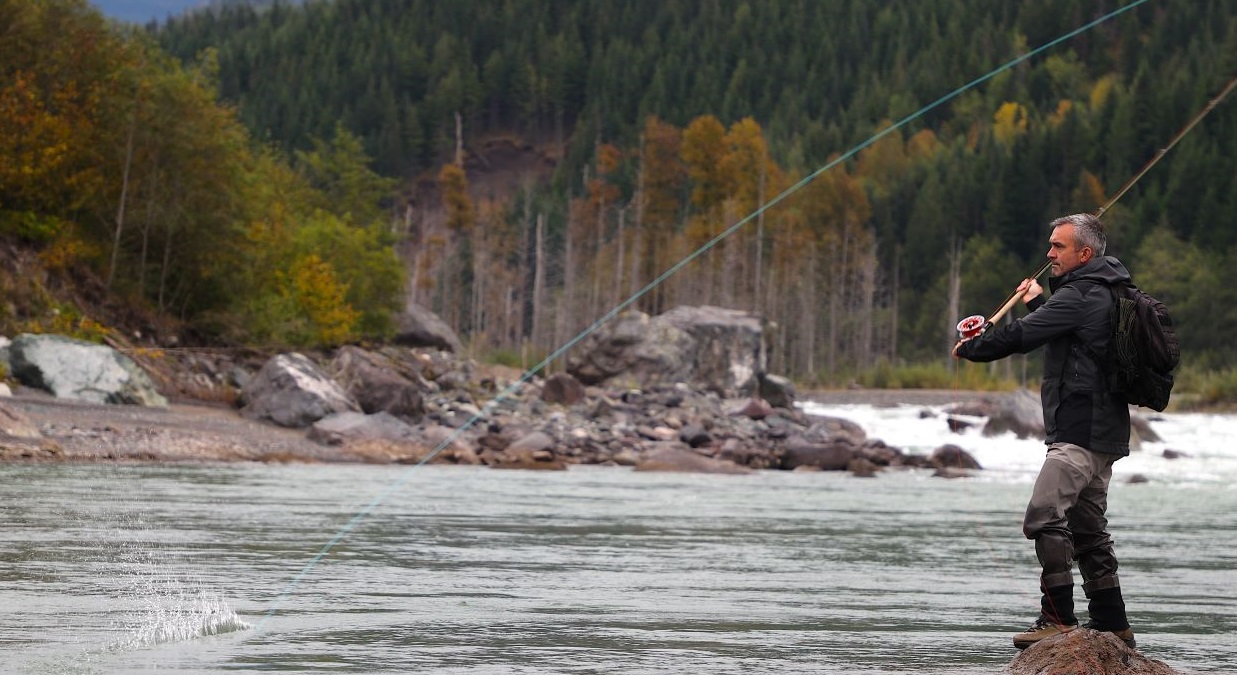CRAPPIE FISHING TECHNIQUES AND TIPS
Fishing | March 27, 2024
SAIL
May 7, 2021

The more time that goes by, the more my fishing tastes evolve. Of course, I still get the same thrill out catching fish and getting to travel to different parts of the world. If I had to choose only one technique to use for the rest of my fishing days, I’d say fly fishing for trout – without hesitation! When we talk about fly fishing, we’re talking about a whole bunch of different techniques. In the sea, a lake, or a river, from the surface of the water to the depths, fly fishing is way more versatile than you’d think! Each technique has its particular specifics and its own materials to use. Here’s an overview of the techniques that I use most often.
Article written by Cyril Chauquet, host of the television show Chasing Monsters and professional fisherman.
In this article, you will learn more about Cyril Chauquet's 3 favorite techniques:
This technique is the easiest to master for beginners, as you won’t have to judge the depth of the water. The concept of “dry fly fishing” is to allow your insect-imitation bait float on the surface of the water. This means that the trout should be at their feeding phase, as they are the ones who will swim up from the depths to the surface toward your fly.
The technique is simple: imitate an insect that would likely find itself on the surface of the water. It may be an imitation mayfly (also known as shadflies or fishflies) that are found in water. Or, it could be an imitation of an insect that has fallen into the water (fly, ant, grasshopper, beetle…). Before casting out your fly, take some time to observe the water to see if certain fish are feeding at the surface. If so, you will notice definitive swirls along the surface of the water. If you’re fishing in a lake, I would recommend casting directly into the zone in which the fish are feeding. If you are fishing in a river, you’ll have to cast a few metres upstream so as to let the current naturally bring your lure into the trout’s field of vision.
The right gear
Generally, I use a 9-ft (274 cm) rod and a no 5 floating silk line (or no 6 if I’m using larger flies). The choice of fly is less crucial than it seems. However, it’s important to have several choices with you (from a number 6 to a number 16) and in a variety of colours like black, white, olive green, and burgundy to match the trouts’ appetites as well as the insects present on the water on that particular day. No matter what, don’t let the fly out of your sight, as since the fish are actively moving, it may only take them a fraction of a second to grab hold.
This technique is probably my favourite, as it’s the most visual. It’s done mostly in rivers, although it may also be done in a lake. While walking along the water with a good pair of polarized sunglasses, look for the fish swimming along with the current.
This technique can be likened to hunting for fish. Once you have spotted your fish, simply cast a nymph its way (an imitation of this aquatic insect), and let the current bring it right to the fish’s mouth. In general, results are quick, since fish will very rarely refuse dinner being served straight to them on a silver platter. The only trick to master is to get your nymph out exactly where it needs to be in order to float directly in front of the fish’s mouth. In order to do so, select a heavier fly, and aim for getting it further upstream to allow enough time for the nymph to be transported by the current.
The right gear
For this technique, I always use a 9-ft (274 cm) rod and a number 5 floating silk line with fluorocarbon, which will help the nymph reach the depths quicker.
Streamer fishing is, without a doubt, the most versatile way to fly fish for trout. With this technique, there is no need to imitate the insects present in the river, as this will also attract a trout’s predators. Streamers are flies that imitate either a small fish, a worm, a shrimp, or a crayfish. My favourite flies are definitely leech imitations, as trout love these! These larger, black-coloured flies should be used in jerky patterns in deeper water, in order to coax the trout out of their hiding places.
Contrary to sight fishing with a nymph, don’t expect to see the fish when you are fishing with a streamer. Rather, the idea is to spot a promising location that may be home to one or more trout, such as a large boulder breaking the current, or a submerged tree on the edge on the river. Then, just cast your fly upstream of your prime spot, and let the current drift your fly close to it. As with other flies, there are thousands of different streamers from which to choose. So, if I had to pick three, I would most likely opt for tried and true classics: a black or olive green Woolly Bugger fly, a grey Muddler Minnow, and an imitation leech fly – a must-have if you ask me!
The right gear
For this technique, I generally use a 9-ft (274 cm) rod, sometimes longer if I need to cast farther, and a number 6 silk line. For the silk, I always bring a floating one, a medium one, and a plunging line to fish deeper where the fish are.